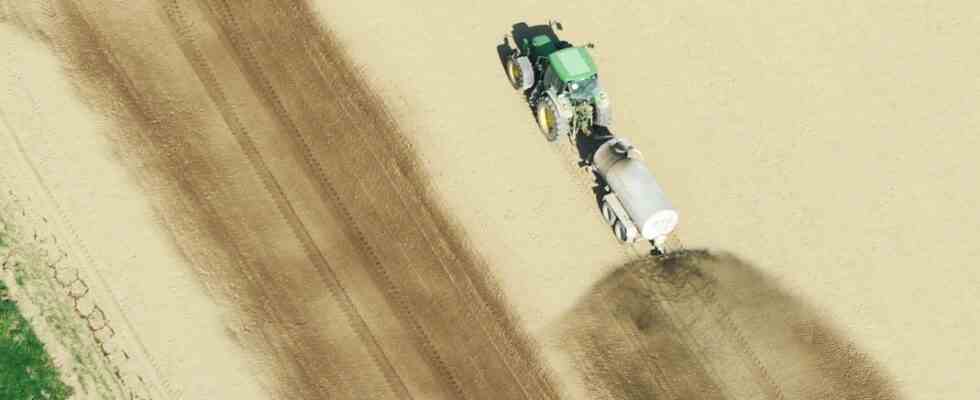The correspondence about the local liquid manure fills entire files, and these files fill entire rows of shelves – which accumulates when two sides argue bitterly for years. After all, the European guideline designed to protect groundwater from too much nitrate has been in existence for 30 years. However, it was never properly implemented in this country – with the result that Berlin and Brussels met again before the European Court of Justice. The EU Commission won. And now this: The argument could be over.
According to information from Süddeutsche Zeitung the Commission agrees with the federal government’s new proposals to protect groundwater. However, with the result that significantly more areas will be considered polluted in the future. Instead of the previous two million hectares of land, farmers would have to work on 2.9 million hectares with less fertilizer in the future. That is 45 percent more than before. In the future, these areas will be considered “red”, i.e. particularly polluted areas.
Germany tears the nitrate limits as long as they exist. More than a quarter of all measuring points report violations of the limit value, which is 50 micrograms per liter of groundwater. Because fertilizer is used diligently where there is a lot of liquid manure, the north with its large stables is particularly affected.
The “red areas” should help fix the problem. Farmers in these areas should use 20 percent less fertilizer, much to the annoyance of the farmers. They feared for yields and often felt that they were being unjustly patronized: because the affected farms in the red areas were not necessarily the ones that spread liquid manure on their fields and meadows in a particularly careless manner. The big farmer protests in 2019 were also sparked by the fertilizer rules.
In 2020, this was met by a “General Administrative Regulation”, which regulated the implementation of the fertilizer regulations in the federal states. It allowed a complicated modeling of all possible influences. In spite of excessive values, some areas remained free of restrictions – for example, on the assumption that underground groundwater flows had transported the nitrate from outside.
Germany threatened a new procedure before the ECJ
According to figures from the EU Commission, this was achieved at a surprisingly large number of measuring points. An initial assessment showed that 80 percent of the measuring points with excessive nitrate values ”are outside the designated areas,” wrote EU Environment Commissioner Virginijus Sinkevičius to the federal government last June. Germany threatened a new procedure before the ECJ, but this time with a sensitive outcome: There were penalties of more than 800,000 euros a day.
A new version of the administrative regulation now envisages that the modeling should be over. Instead, the measuring network of the federal states, which surveys the quality of the groundwater, is to be “significantly” consolidated again by 2024, according to a paper by the Ministry of Agriculture. On the basis of a more closely meshed network, new statistical methods are to be developed from 2028 that will come closer to the true nitrate pollution. And they are then the basis of the “red areas”.
However, the Federal Council must now also approve the new regulation. “We have mastered an important stage,” says Federal Minister of Agriculture Cem Özdemir (Greens). “But we’re not quite there yet.” Several states, including North Rhine-Westphalia and Saxony-Anhalt, have already announced resistance, and the farmers’ association is not happy either. After a long argument, Özdemir warns to hurry. “We shouldn’t overstrain our patience in the last few meters.” The new rules should pass the Federal Council before the summer break. Ultimately, says the Green Party, this is also in the interests of farmers. “They have been the victims of an unfortunate delaying tactic for far too long.”

